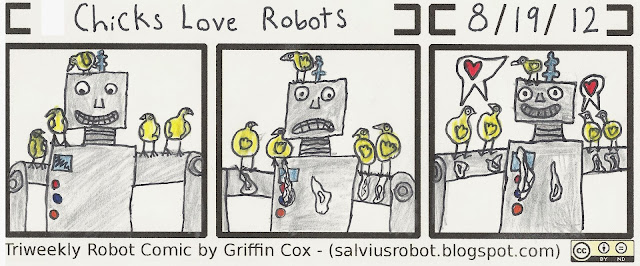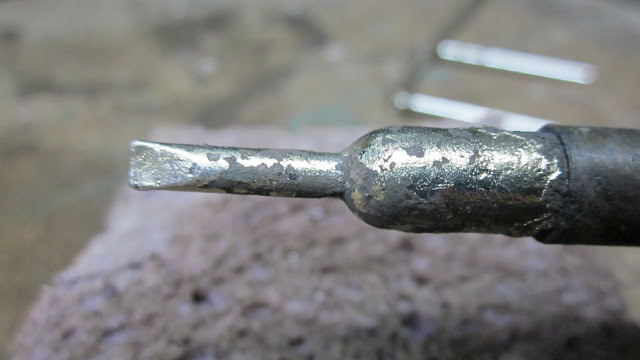Switches
Switches are the most basic electronic component. A switch creates a break (disconnection) in a circuit to stop the flow of current. The break has almost infinite resistance because in theory it should have as much resistance as the air between the gap in the connection. Switches are said to be open when there is a gap between the contractors inside of them that disallows the flow of current. On the other hand, a switch is said to be closed when the contractors are contacting one another which enables the flow of current within the circuit. A switch is always either open or closed although some switches can have additional connections that can be closed depending on the position of the switch.
Besides the simple type of switches that are only either open or closed (on or off) there are also many other configurations that that allow a switch to select one of several circuits depending on its position.
The simplest type of switch is the single pole single throw (SPDT). The SPDT switch has two terminals that are either connected or disconnected. Another type of switch is the single pole double throw (SPDT). SPDT switches can select one of two connections to turn on. Many times these switches will be labeled with the abbreviations NC, NO, and COM; these stand for normally open (NO), normally closed (NC) and common (COM). These are the normal connections that are the default state of the switch.
Besides the simple type of switches that are only either open or closed (on or off) there are also many other configurations that that allow a switch to select one of several circuits depending on its position.
The simplest type of switch is the single pole single throw (SPDT). The SPDT switch has two terminals that are either connected or disconnected. Another type of switch is the single pole double throw (SPDT). SPDT switches can select one of two connections to turn on. Many times these switches will be labeled with the abbreviations NC, NO, and COM; these stand for normally open (NO), normally closed (NC) and common (COM). These are the normal connections that are the default state of the switch.
Transformers
A transformer is a component that transfers current from one circuit to another in order to increase or decrease electrical voltage. The transfer occurs through the process of induction where electromagnetic fields induce current in a conductor.
A transformer can be broken down into three main parts: a primary winding, secondary winding, and a core. When current is applied to the primary winding the result is the production of a magnetic field. The magnetic field causes current to be produced in the secondary coil. Turn ratios are the ratio of turns in each winding. The turn ratio determines the properties of the transformer. If the primary winding has more turns than the secondary winding then the voltage is decreased. On the other hand if the primary winding has fewer turns than the secondary winding then the voltage will be increased. Transformers that increase voltage are called "step up" transformers while ones that decrease voltage are called "step down" transformers. The turn ratio can be used to calculate how much the voltage will be altered. To do this divide the number of turns on the primary winding by the number of turns on the secondary winding and multiply this by the input voltage. This will give you the output voltage of the transformer.
Tips on Soldering
These are just some tips for when you solder electronics.
- Replace tip if necessary - I don't do this very often but some cheap soldering irons can ware out over only a few weeks of use. You will know if you need to replace your tip because it will look disfigured almost like it melted.
- Clean the tip with a sponge - do this while the soldering iron is hot. Simply use a damp sponge to wipe away any carbon (black) and excess solder. The result will be a nice shiny tip.
- Soldering paste or flux can be used to help solder attach to some surfaces but this is not always necessary.
- Make sure you are using good solder. Some solder contains impurities and may not bond well to the materials that you are using. I have had good luck with 60/40.
Do and Don't:
- Do: Good solder joint (shiny, smooth)
- Don't: Bad solder joint (dull, lumpy)
Inductors
A inductor is an electrical component that stores energy in its magnetic field. Inductors are very simple components that are usually nothing more than a conductive material made into a coil in order to increase the magnetic field. When the current flowing through an inductor changes, creating a time-varying magnetic field inside the coil, a voltage is induced, which opposes the change in current that created it. Inductors are used in electronics where current and voltage change with time. Inductors are used to delay and reshape alternating currents.
Inductance is the property that materials have that causes current to be generated when a change occurs in the current flowing. This the result of magnetic field forming around a current-carrying conductor which tends to resist changes in the current. Electric current through the conductor creates a magnetic flux proportional to the current. A change in this current creates a corresponding change in magnetic flux which, in turn, by Faraday's law generates an electromotive force (EMF) that opposes this change in current.
Inductance is a measure of the amount of EMF generated per unit change in current. For example, an inductor with an inductance of 1 henry produces an EMF of 1 volt when the current through the inductor changes at the rate of 1 ampere per second. The number of loops, the size of each loop, and the material it is wrapped around all affect the inductance. For example, the magnetic flux linking these turns can be increased by coiling the conductor around a material with a high permeability such as iron.
- From Wikipedia
Types of Inductors:
Ideal inductors - these have inductance but no resistance or capacitance. Ideal inductors do not dissipate or radiate any sort of energy.
Real inductors - these behave as resonant circuits because they are self-resonant.
Edit:
In an electrical circuit, resonance occurs at a particular frequency when the inductive reactance and the capacitive reactance are of equal magnitude, causing electrical energy to oscillate between the magnetic field of the inductor and the electric field of the capacitor.
Resonance occurs because the collapsing magnetic field of the inductor generates an electric current in its windings that charges the capacitor and the discharging capacitor provides an electric current that builds the magnetic field in the inductor, and the process is repeated. An analogy is a mechanical pendulum.
At resonance, the series impedance of the two elements is at a minimum and the parallel impedance is a maximum. Resonance is used for tuning and filtering, because resonance occurs at a particular frequency for given values of inductance and capacitance. Resonance can be detrimental to the operation of communications circuits by causing unwanted sustained and transient oscillations that may cause noise, signal distortion, and damage to circuit elements. - From Wikipedia






















